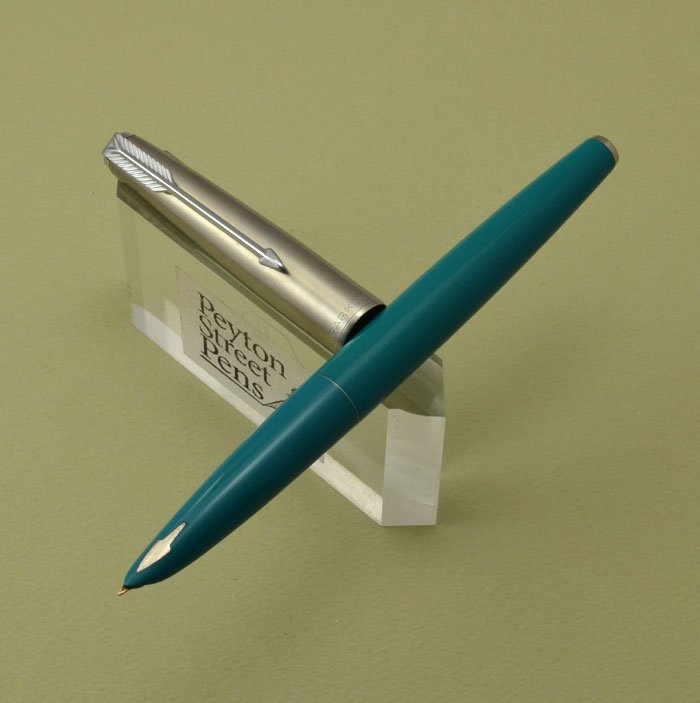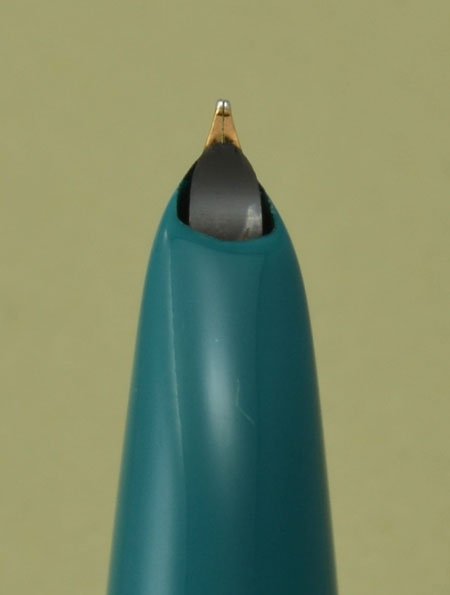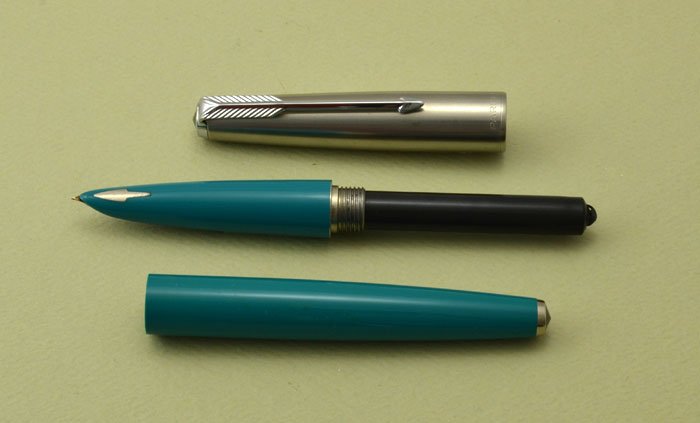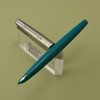Product Description
| Type | fountain pen |
| Product Name | Parker 61 |
| Manufacturer and Year | Parker -- USA -- 1959-62 |
| Length | 5-1/4" |
| Filling System | The fountain pen has the capillary filling system which is unique to this model. See further details below. |
| Color | Brushed stainless steel cap. The body is a dark aqua/turquoise which Parker called Vista Blue. Double pearlescent jewels on either end. |
| Nib | The gold nib is not marked but it writes like a fine. The nib is in great shape and not worn at all, lots of tipping material. |
| Condition | Excellent near mint condition, both cosmetically and functionally. No scratches or dings or dents. The teflon cell is in good condition with no scratches on the teflon. The spring-loaded valve in the end of the barrel is nice and spring-y. The arrow inset in the section is intact and not coming loose. We cleaned and tested the filling system, and got good ink flow. You'll need to be patient when you fill it the first time, as it takes 15-30 minutesfor the capillary system to suck in enough ink to get started the first time. |
A word or two about the Parker 61 Capillary Filling System. If you are not familiar with this unique design, you should read this.
Here is how you fill a Parker 61, and an insight into how the pen actually works. Unscrew the barrel and stick the back end of the pen (aka the capillary cell) into a bottle of ink. Wait a few minutes (probably more like a half hour when you first start one of these older used ones), and let the ink wick up into the capillary cell. The cell contains a sheet of perforated plastic that has been given a 3-D pattern resembling tire tread, and rolled up. The perforations allow ink to seep between the rolled-up layers, and the tread pattern maintains space between the layers. In the middle of this tube, which runs the entire length of the capillary cell, is the feed. To keep things clean, the capillary cell has on a coating of teflonon the outside that is intended to shed ink as the user withdraws the pen from the ink bottle, leaving very little ink to be wiped off. The end of the barrel contains a spring-loaded thingey which covers the open end of the capillary tube, but still allows it to vent.






